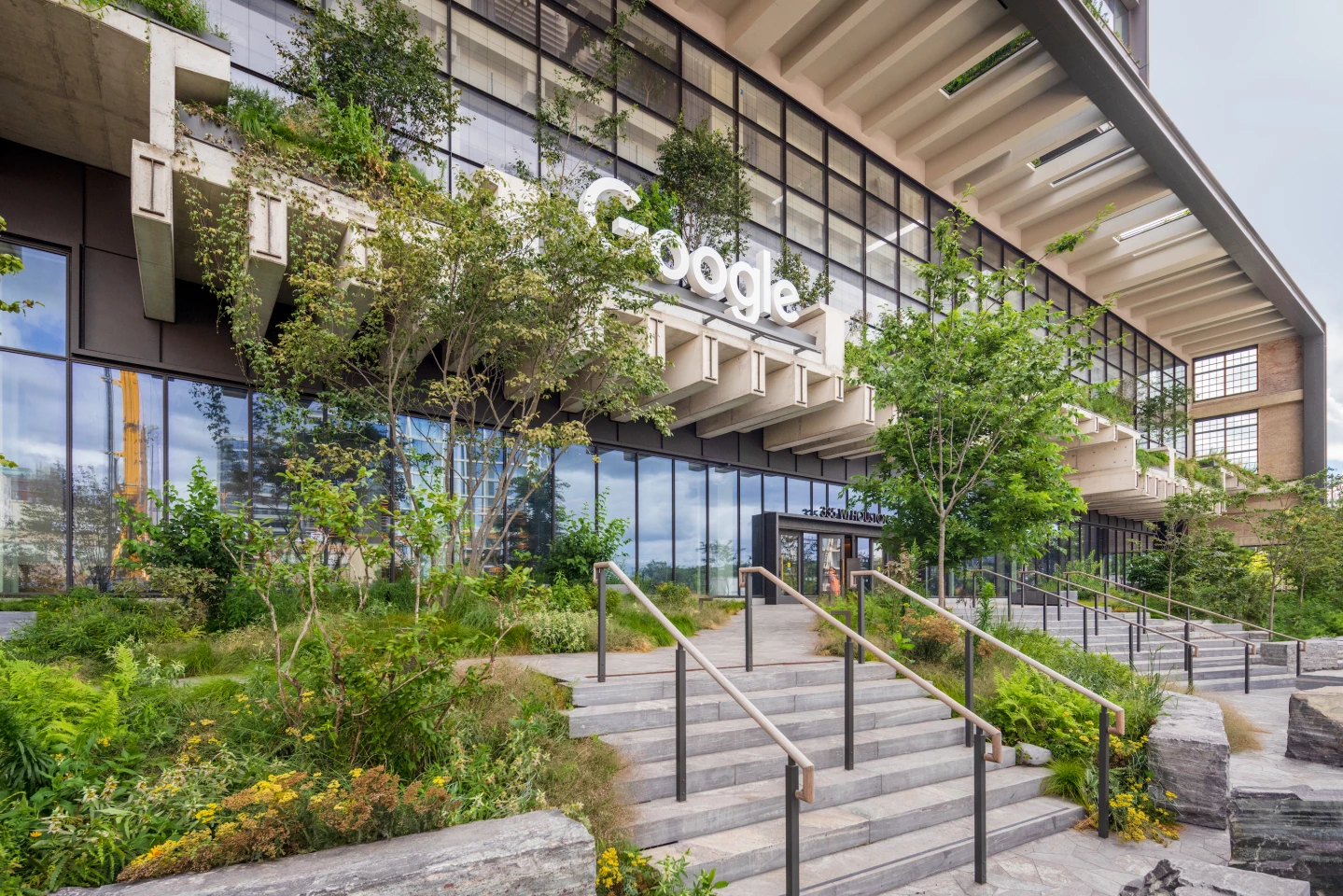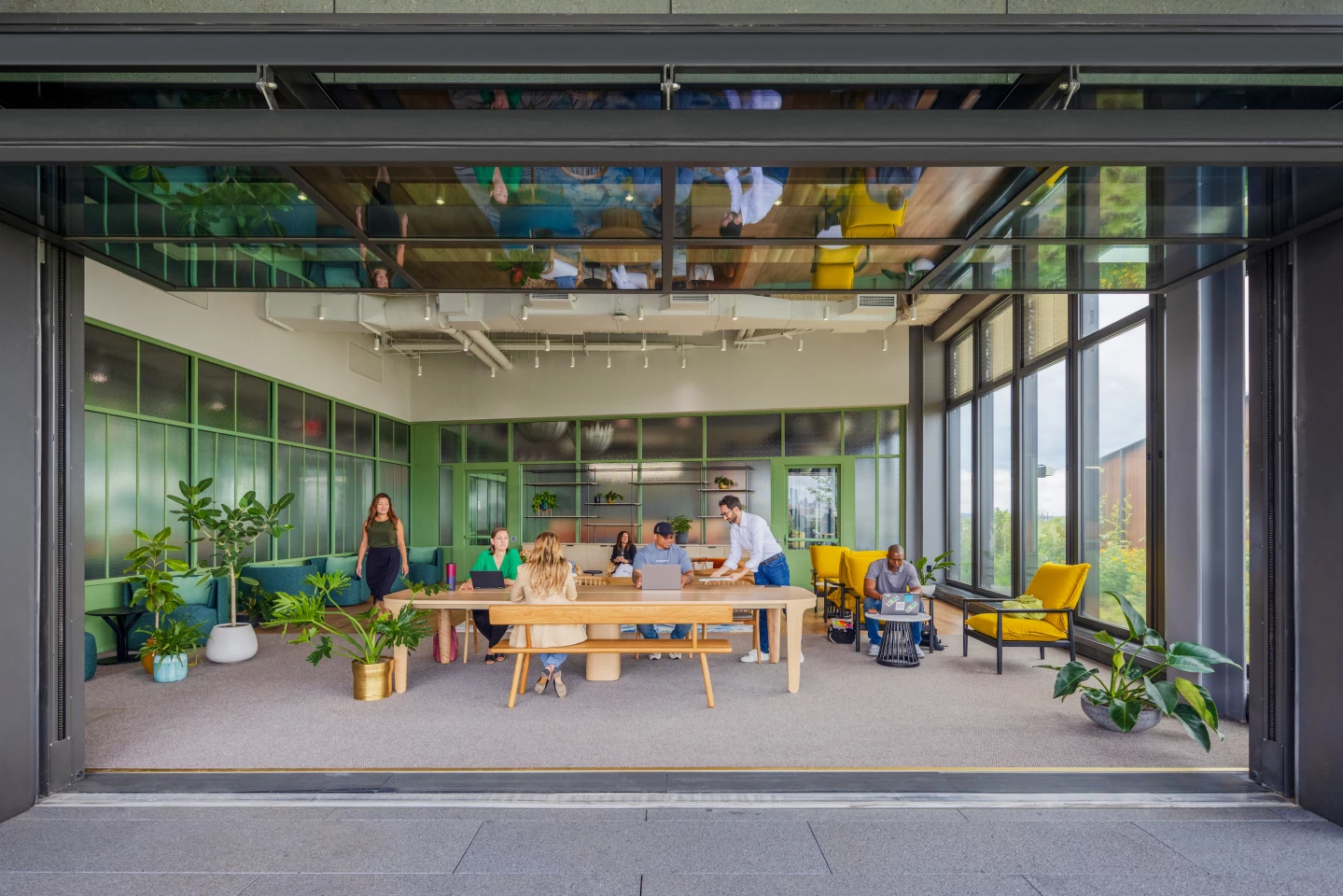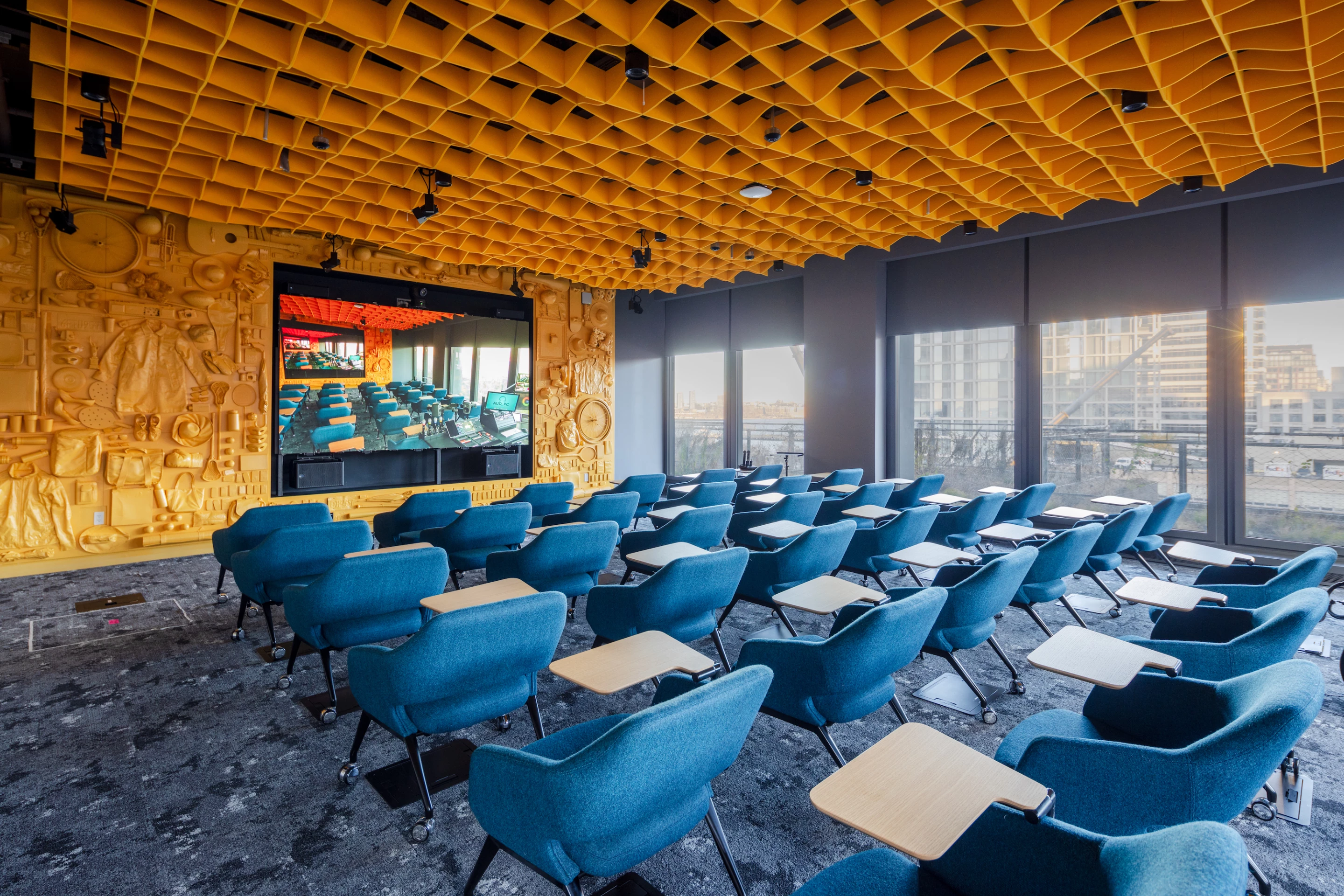Google has commissioned the ambitious transformation of a 1930s rail terminal into a new headquarters in New York City. Named St. John's Terminal, the building has been massively upgraded, including the addition of high-tech sustainability features and around 1.5 acres (0.6 hectares) of lush greenery.
St. John's Terminal was originally the building that NYC's famous High Line terminated at, when it actually functioned as rail tracks. CookFox Architects and Gensler worked together to painstakingly bring it up to modern standards, extending it vertically to 12 floors.
Its interior is mostly dedicated to office space, but also features a ground-floor hall and a central staircase that cuts diagonally through the building to encourage chance social encounters.
Additionally, the design team added flexible collaborative spaces and outdoor areas for socializing and casual work, while also maintaining original rail beds for use as planters for all that greenery. A lot of effort went into maximizing views of the nearby Hudson river too – both for Google's staff and for people in the surrounding areas.

"The original St. John's terminal structure serves as the base of our new office, but we removed the portion that loomed over Houston street, removing a dark tunnel and restoring the connection between the Hudson Square neighborhood and the waterfront," explained Google in a blog post. "Adapting the existing structure and foundation is projected to save approximately 78,400 metric tons of carbon dioxide equivalent emissions when compared to creating a new structural foundation. That's equivalent to removing roughly 17,000 cars from the road for a year.
"The building has 1.5 acres [0.6 hectares] of vegetation at street level, in rail bed gardens, and on terraces, redefining what 'green space' means for commercial real estate in New York. This not only enhances the experience for occupants but also benefits the local ecology. Over 95% of the exterior plants at St. John's Terminal are native to New York State, reknitting the building into the local system. Working with NYC Audubon, we've observed over 40 bird species using the habitat created at St. John's Terminal – including birds fueling up for a trans-Atlantic migratory flight."

St. John's Terminal has received the LEED Platinum green building standard and is impressively energy efficient. Its large solar panel array reduces its power draw on the grid, while up to 92,000 gallons (almost 350,000 liters) of rainwater is captured for irrigation. The project also made use of wood that was reclaimed from the Coney Island boardwalk after Hurricane Sandy.
Though there are some high-profile exceptions, Google tends to adapt existing buildings to its needs, contrasting with other major US tech firms like Apple and Amazon, which prefer all-new buildings.
Source: Google











